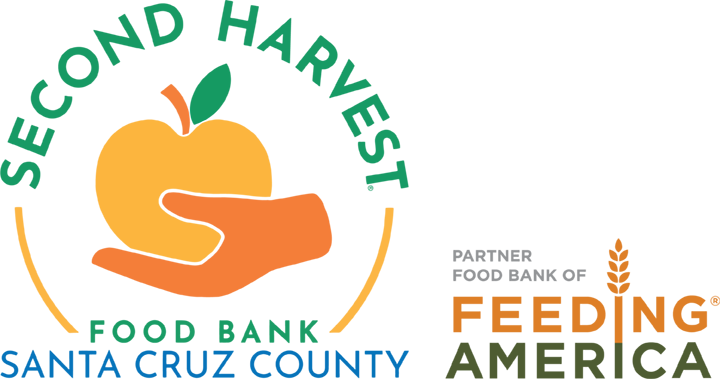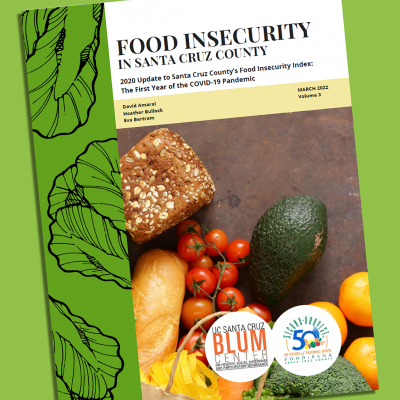2020 Update to Santa Cruz County’s Food Insecurity Index: The First Year of the COVID-19 Pandemic
OVERVIEW
Since 2019, the Blum Center on Poverty, Social Enterprise, and Participatory Governance at the University of California, Santa Cruz and Second Harvest Food Bank of Santa Cruz County have worked together to estimate food insecurity in Santa Cruz County. We base our estimates on a food insecurity index that is designed to accurately estimate and track the prevalence of food insecurity in the county and to assess efforts by the food bank, community partners, and government nutrition programs to meet local food assistance needs. Our goals in tracking annual rates of food insecurity in Santa Cruz County are to (1) inform the public about local need and (2) provide a metric for evaluating countywide progress toward reducing food insecurity.
Food insecurity occurs when a household lacks reliable access to sufficient nutritious food to maintain a healthy diet and lifestyle. Food insecurity encompasses a range of challenges, from missed meals, running out of groceries and not having money to purchase more food, to the anxiety that is experienced when access to food is uncertain. Experiences of food insecurity may be temporary or chronic. A large body of research documents that food insecurity, in its many forms, is associated with adverse physical and mental health outcomes for both children and adults, including asthma, depression, diabetes, hypertension, and behavioral issues (Drenner et al., 2019;Gundersen & Ziliak, 2015; Seligman et al., 2010; Stuff et al., 2004; Thomas et al., 2019; Whitaker et al., 2006). Alleviating food insecurity reduces these negative effects, contributing to improved health, educational attainment, and economic mobility in the short-term and decades later(Baileyet al., 2020; Bitler & Figinski, 2019).
In 2020, 10.5% of U.S. households experienced food insecurity, with families with children (14.8%),and African American (21.7%), and Latinx or Hispanic (17.2%) households experiencing even higher rates of food insecurity (Coleman-Jensen et al., 2021). Despite its prevalence, food insecurity receives limited media attention. A notable exception occurred during the early months of theCOVID-19 pandemic, when the dramatic spike in food insecurity resulted in increased national media coverage and heightened public concern.
We confronted multiple challenges to updating our estimates for the fiscal year extending from July2019 through June 2020. In addition to limited data availability, the index is a measure of annual rates and was not developed to trace sudden fluctuations in need such as those brought on by the pandemic. Despite these challenges, we are confident in the updated estimates of food insecurity provided in this report and the methodological revisions reported here (see Notes on Methodology). We hope that our findings will inform efforts to reduce food insecurity in Santa Cruz County, and galvanize the resources and public commitment needed to do so.
Download Report – Food Insecurity in Santa Cruz County
___________
1 “Hispanic” is the category used by the USDA and can include members of any racial group.
2 For example, see New York Times photo-journalism by Brenda Ann Kenneally (2020).

